Lime kitchens
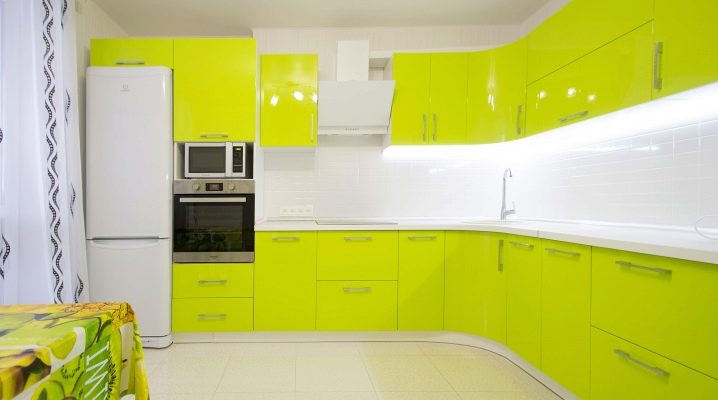
The kitchen is part of the living space of the apartment, which is called the heart of the house. In contrast to the relaxing atmosphere of the bedroom, the bright colors of the kitchen can set an energetic mood for a new day. Everybody starts the morning in the kitchen with breakfast or at least a cup of coffee, and the stylistic solution of the interior in invigorating, fresh shades of lime can “generate” a joyful feeling, even despite the cloudy weather outside the window.
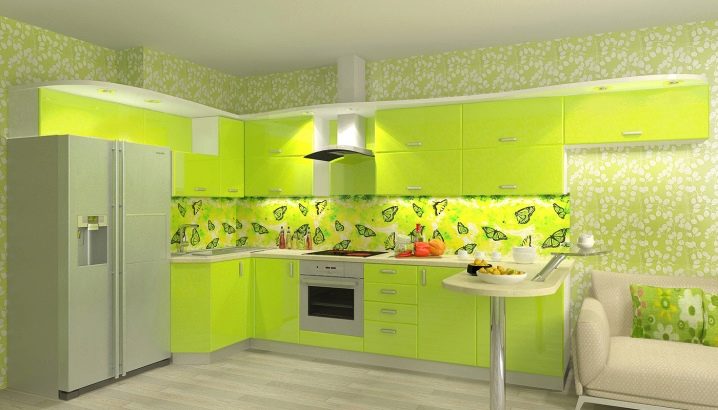
History of the shade
The color of the lime, so named for a fruit from the citrus family. It is a shade between yellow and green, similar to light green, but brighter and more sunny. At first glance, it seems that it was not so long ago that it was used in design, but in fact, color has an interesting history. The oldest recorded mention of lime as an independent shade dates back to 1890. It was then that a triumphant march through the world of Art Nouveau style began, the bright pattern of which was inspired by natural motives and lime was ideally combined with the entire palette of green colors, with lilac, orange and gold.
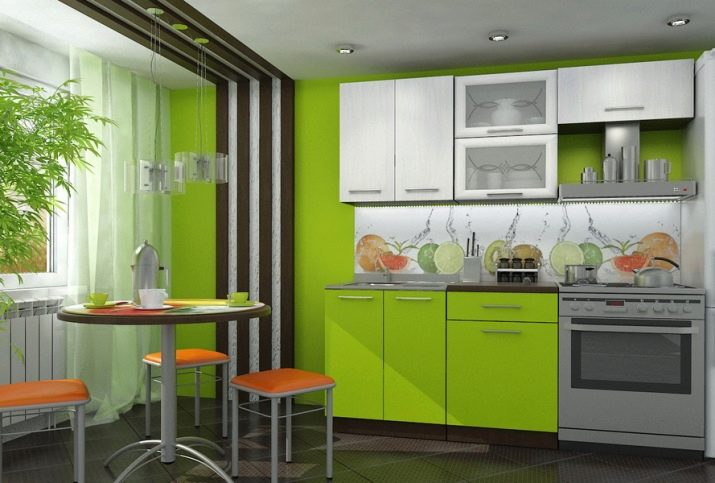
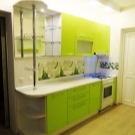

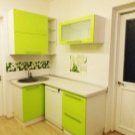
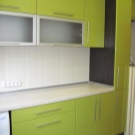
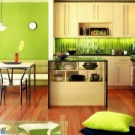
The color received its second birth in the 60s of the XX century. The interiors then were characterized by: a combination of strict and smooth lines and shapes, an abundance of matte and glossy plastic, laconic geometric ornaments. Dynamic lime shades fit perfectly into the style of the years filled with the energy of the first space flights and scientific discoveries. History has taken a turn, and today the ideas and techniques of the 60s are again popular in interior design: simple shapes and bright colors.
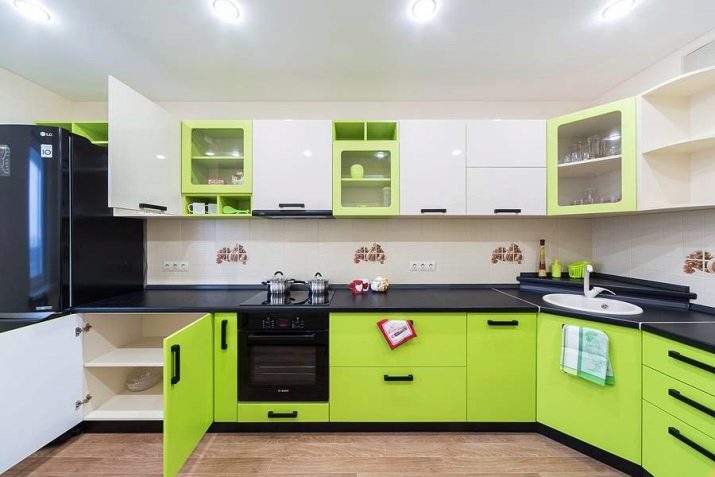


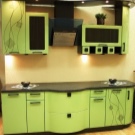
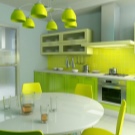

Peculiarities
To take full advantage of the positive characteristics of a color, you need to know its features. Lime is not the simplest color, which has the following subtleties of application:
- the shade is able to visually expand the space, perfect for very small kitchens;
- it instantly changes the general atmosphere of the room: by repainting even part of the facades, you can quickly get a completely different image of the kitchen, more modern and bright;
- lime is recommended by designers for rooms on the shady and northern sides, or if the kitchen window opens into a blank "bag" of the yard, bounded by the gray walls of neighboring houses; the color of the sunny fruit makes up for the lack of light and beautiful appearance;
- nutritionists claim that this color stimulates the appetite;
- psychologists, armed with the knowledge of color therapy, use a shade of lime to treat depression, neuroses, and depression.
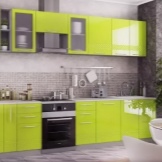
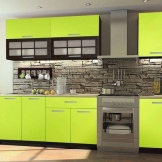
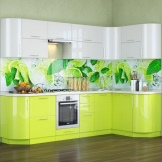
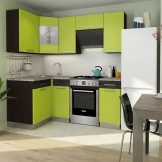
However, it must be remembered that an excess of such an aggressively energetic color can irritate the nervous system. If you intend to spend quite a long time in the kitchen, for example, if you are passionate about cooking or you have a large family and have to cook a lot, then you should not decorate the entire set in lime color, especially in its most juicy or glossy version.
Variety of shades
Lime color hides a varied palette based on different ratios of yellow and green and their intensity. There are eight basic shades, such as:
- traditional lime;
- web lime (acidic, very bright);
- lemon lime (color with a high percentage of yellow);
- lime electrician;
- Crayola Electric Lime (created by Crayola, a creative goods brand in 1990);
- lime green (darker than others, closest to green);
- arctic;
- French lime.
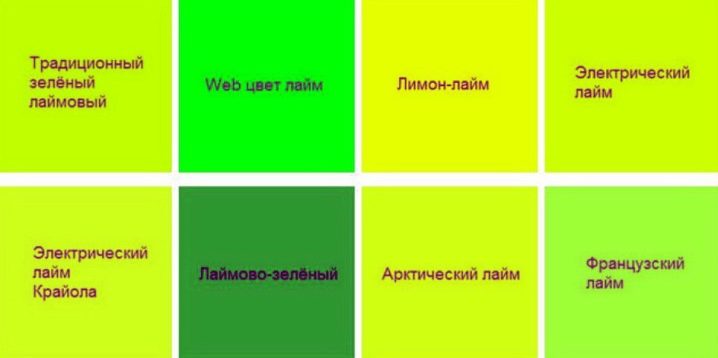
Application in various styles
The lime color is applicable not only to the revival of the 60s style today, but also to the following directions:
- classic - a fresh yellow-green hue in combination with the whole range of natural wood tones will make the classic interior modern and boring;
- provence - a muted, slightly bleached lime color is desirable for this style; harmoniously it will look next to lavender, cream, white;
- high tech - lime will ideally complement the cold dullness or shine of metal and glass surfaces;
- loft - small blotches of color will soften the brutality of walls made of raw brick, concrete and metal elements that are inherent in this style;
- minimalism - the strict forms of solid lime facades are self-sufficient and do not require any extra decor.
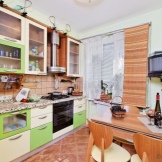
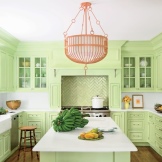


A minimalist modular kitchen set today is often made of plastic. Lime is great on the smooth glossy surfaces of acrylic kitchen cabinets. This material has recently been used in the decoration of facades. It has many advantages: it does not fade, does not absorb odors and dirt, it is moisture resistant and durable. But a spectacular shiny finish has the following disadvantages:
- it is expensive;
- fingerprints and stains of water and grease are very noticeable on it, therefore it is advisable to treat the surfaces with a protective polish;
- the shine of the gloss gets boring pretty quickly.
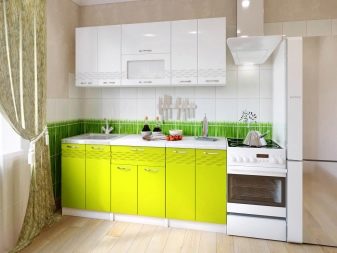

A dynamic citrus color will not look harmonious with styles such as Empire and Baroque. These trends in themselves are quite pretentious and filled with numerous decorations: carving, stucco molding, gilding. They prefer expensive woods in natural colors, tinted or painted in such noble colors as "ivory", "coffee with milk" and others.
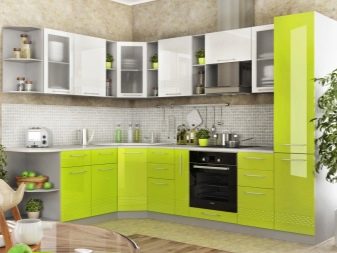

Combination with other colors
Not everyone is ready to decide on a monochrome kitchen design in juicy citrus. It is better if only part of the headset is made in this color. You can play with modules, making only the top or bottom of the kit bright. There are a great many compositional options, for example, to highlight the vertical lines of cabinets-cases or horizontal drawers with color, to combine colors in a checkerboard pattern or chaotically. A harmonious combination for lime will be such shades as:
- beige, cream tones and light wood species (walnut, alder, oak, birch, ash) will “calm down” the energy of lime;
- the timeless texture of dark wenge wood plays interestingly with lime in contrast; the neighborhood with an exotic zebrano will look luxurious;
- Variations of lime with different tones of gray - from light to graphite - have the right to exist, because it goes well with stainless steel surfaces;
- lime looks very fresh with classic white and turquoise; this tandem will especially decorate the kitchen with windows to the sunny side;
- lime with orange, coral, yellow (lemon) - the most "summer" combinations, very sunny, even tropical; you need to be more careful with them - they can quickly get bored;
- effective and eye-pleasing combinations of lime with purple and blue.
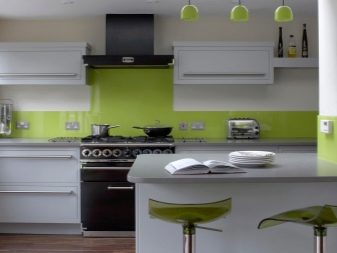
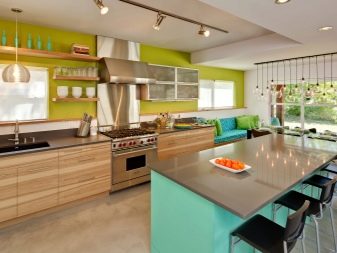

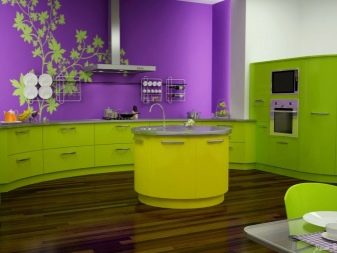
Use cases
Lime in the kitchen can be used not only for facades. A painted or citrus-tiled wall is the perfect backdrop for a serene, classic wooden set. The wenge kitchen will "feel" great on the lime-colored porcelain stoneware floor.
Add decorative elements, textiles, dishes of this shade and the interior will be complete.
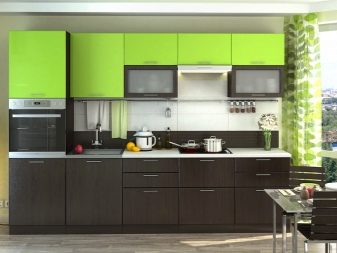
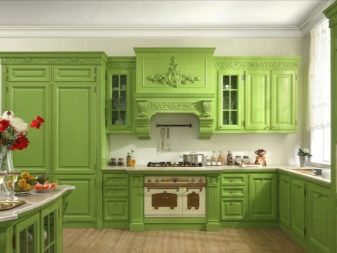
Lime plastic chairs or an acrylic table top will be a joyful accent. A kitchen island or a bar counter can be distinguished by a juicy color. Put a bright couch in the kitchen, hang yellow-green curtains. The most daring can even decide on photo printing on front surfaces or on a kitchen apron and contemplate your favorite fruit in its natural form in full glory.
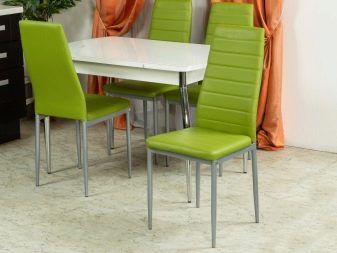
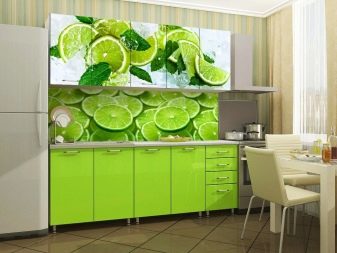
Knowing the right approach to such a complex color as lime, you can skillfully apply it in the interior of the kitchen so that it does not quickly become boring, but brings only joy.
For information on how to choose lime-colored kitchen furniture, see the next video.













The comment was sent successfully.